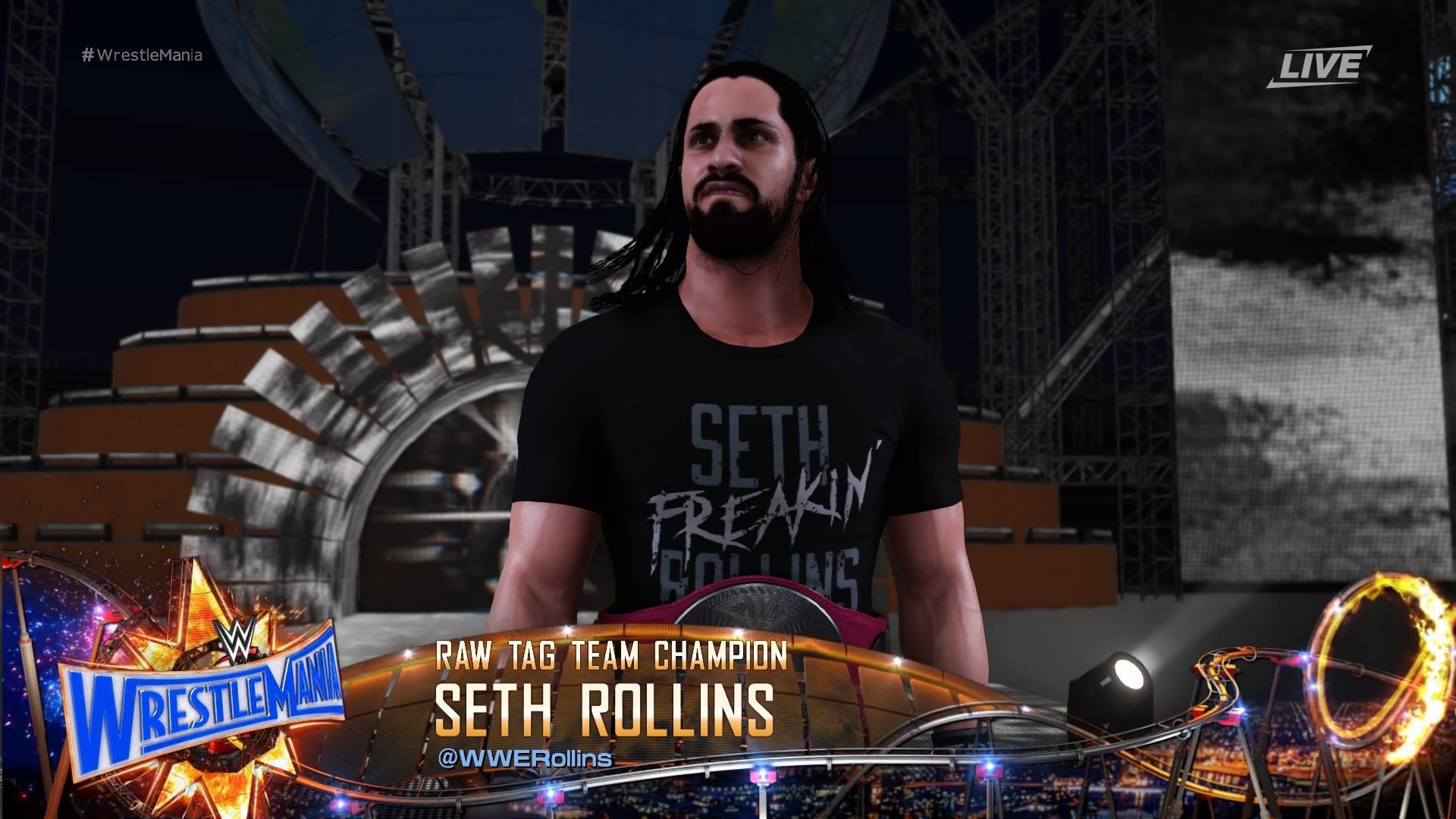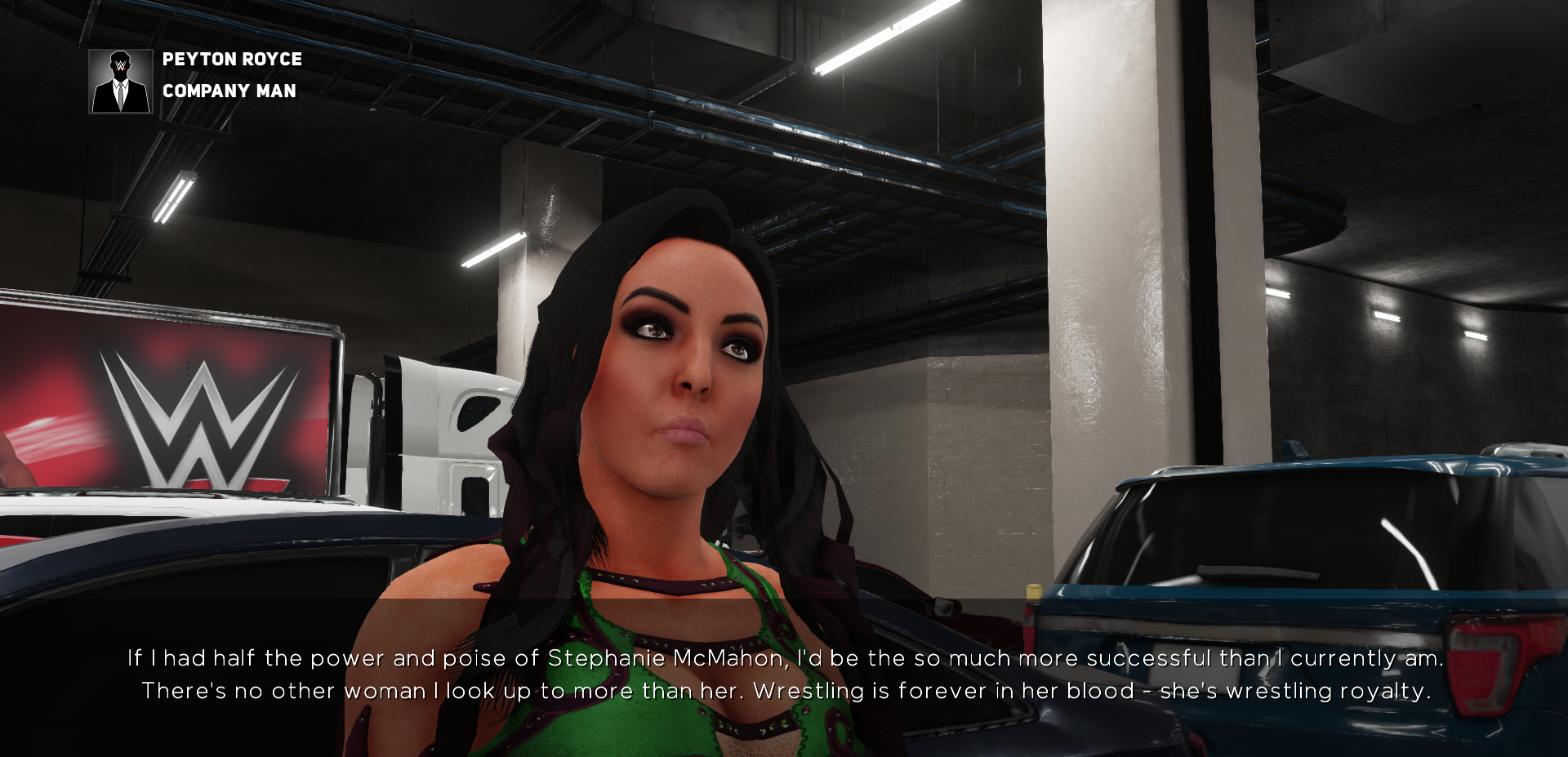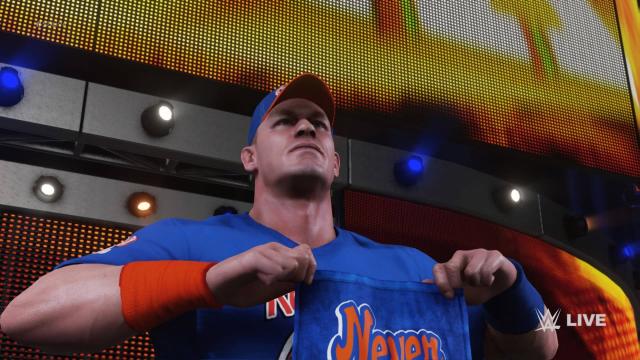This week, 2K Sports released WWE 2K18, the 19th title in the pro wrestling series that dates back to THQ’s two SmackDown games released on the original PlayStation in 2000 and subsequently became an annual release. Unsurprisingly, it’s a massive disappointment of the same variety that the franchise has been churning out for years.
Hey, at least WWE 2K18’s version of John Cena looks good
Developed by Japan’s Yuke’s and acquired by Take Two Interactive in the aftermath of THQ’s financial collapse, the WWE video game franchise has been the only option for pro wrestling fans for much of its existence. You can thank not just the collapse of non-WWE major league wrestling for that, but also a decade-long valley in the popularity of Japanese pro wrestling and THQ’s odd decision in 2005 to prioritise what was then the weakest of its several pro wrestling series.
That series, SmackDown, was rebranded as SmackDown vs. Raw, WWE [XX year], and then WWE 2K after Take Two acquired the licence. Since then, other pro wrestling games have been few and far between, so if you wanted to play a current generation, modernised one, you had to play the WWE games.
As a result, it’s often easy to overlook the franchise’s flaws, of which the list isn’t exactly short. The most well-known are the numerous bugs, like wrestlers getting stuck to objects, wrestlers floating in the air after a ladder is pulled out from under them, doors opening and closing on their own, and everyone’s favourite, circumstances where the referee’s counting is messed up.
This year, that last honour goes to eight-person tag team matches, where the referee will refuse to count your pins. A similar bug was in last year’s game… but only after they patched it in the first place.
The core problem with these games seems to be the underlying gameplay technology, which, as best as anyone can tell, is the same system that Yuke’s used not just at the start of the series, but even earlier for the Toukon Retsuden (roughly “Fighting Spirit”) series of New Japan Pro Wrestling games. The first of those NJPW titles (which you might know better as Activision’s Power Move Pro Wrestling) was released by Tomy on September 29, 1995.
We’re not talking about the kind of iterative update you see with most annual sports titles: This game, at its core, feels decades old. The age shows, too. The character models for the wrestlers generally don’t look close to the level of any other current generation title with the exception of a few key top stars. And event then, some of the biggest names in WWE don’t make it out unscathed.
John Cena, for example, looks pretty swell in his WWE 2K18 counterpart, albeit with a bit of a plasticine appearance.
Seth Rollins, in spite of being the cover athlete this year, looks like a fan-created wrestler and not someone whose faced was scanned:

This screenshot of Peyton Royce has been doing the rounds more for the dialogue than anything else, but it perfectly illustrates the issues with hair and the uncanny valley, as well.

Original source for this ghastly WWE 2K18 unknown. Possibly the Something Awful forums.
The special treatment for the series’ version of some top stars seemed to start when 2K’s Visual Concepts studio began lending a hand for 2014’s “WWE 2K15”. Leading up to the release of that game, most of the screenshots and video clips put out by 2K were not the usual fare with roster members and their character models being revealed one by one. Instead, there was a distinct focus on a small handful of top stars, seemingly because they were the only ones that kept the game’s graphics from being completely embarrassing.
Everyone’s hair looked like something out of a bad PS1 game (funny how that works). It was worse for the women wrestlers, whose hair looked like it was made out of Play Doh. Multiple blond male wrestlers inexplicably had jet black hair. Anatomy was terrifying, to the point that I had to Tweet a warning as soon as the embargo on publicly commenting on my review copy had expired:
The embargo is over, so: WWE 2K15 is terrible. Here’s Exorcist Muppet Summer Rae to fill you in: http://t.co/sJEMuupO1K
— David Bixenspan (@davidbix) November 18, 2014
None of this has improved much, with the overall graphics, especially hair, way behind current norms. But it’s not just the incredibly primitive models: There’s screen tearing one of the “MyCareer mode’s hub areas, the WWE Performance Center gym. Older animations, like certain strikes, look like they’re missing frames, especially thrown in sequence. Graphics are only part of the problem, though.
When THQ first got the WWE licence, and for several years afterwards, it contracted with different developers for each console. Yuke’s did the PlayStation and PlayStation 2 games. AKI (Now Syn Sophia), who they worked with previously on WCW titles, developed the Nintendo 64 games. Anchor and Studio Gigante did the games for the original Xbox, and Natsume handled development duties for Game Boy Advance.
Yuke’s also developed the Gamecube games, albeit with most of them using a different engine from the SmackDown titles available on the PlayStation 2 at the same time. The N64 games were, by a wide margin, the most well-received and beloved. It helped that they were considered a continuation of the incredibly popular WCW vs. nWo World Tour and WCW/nWo Revenge.
Those two WCW N64 games were so well-received and popular, in fact, that they won the “Fighting Game of the Year” award in back to back years at what are now the D.I.C.E. Awards. Wrestling games just don’t get that kind of recognition, before or since. They were intuitive yet deep, and the play style lended itself to dramatic matches. The added moves and modes in the WWE versions didn’t change any of that, either.
So it came as a bit of a shock when THQ dumped AKI, and their engine was only used a few more times for wrestling/fighting games for titles leveraging the Ultimate M.U.S.C.L.E. and Def Jam licenses. Yuke’s subsequent Gamecube titles very obviously aped the AKI style of gameplay in a series that also featured the best collision detection in the history of wrestling video games. That engine, though, which was also used in Japan’s Wrestle Kingdom series, was dumped when the formerly PlayStation-only Yuke’s series SmackDown went cross-platform.
One of the most comical parts of all this is that when the first SmackDown game was announced with Yuke’s developing, there was a lot of excitement stemming from the popularity of the Toukon Retsuden series. Upon release, though, there was a lot of confusion, as numerous moves and other in-ring situations were missing.
That’s because the most recent of the Toukon Retsuden games was not used as the basis for 2000’s “SmackDown” Instead, it was built off of Simple 1500 Series Vol. 22: The Pro Wrestling, an entry in a cut-price series of Japanese PS1 titles that was targeted towards new and casual gamers. Hence WWF SmackDown feeling incomplete compared to the Toukon Retsuden games.
Seventeen-plus years of grafting new controls onto an already dumbed down game has never really worked. None of the mechanics in Yuke’s recent WWE 2K games feel especially natural, and those that they try to improve in a given year, like 2K18’s new submission system, is a band-aid that doesn’t fundamentally change how the game works.
The most substantive gameplay changes over the years have been the transitional aspects, like how a wrestler behaves in terms of showing and selling damage between moves. That change is a nice way to slow down the pace to put it more in line with the AKI games. Swinging the momentum in your favour is harder than it may have been in some other wrestling franchises, but when you do, it feels earned.
Overall, though, this is a series that has long felt like it was an excuse to build up the presentation with the actual gameplay being an afterthought. Ring entrances, arenas, backstage areas, on-screen graphics, etc., clearly have a ton of work put into them. Even then, though, that suffers in 2K18: Matches with eight wrestlers are finally back after being gone for years, but as a consequence, they feature slowdown the likes of which is just not acceptable in modern gaming.
The AKI games had similar issues with multiple wrestlers on-screen, especially with ladders and other weapons, but that was almost 20 years ago and at least then you could give it a boost with the N64 Expansion Pak. I have no idea how much of a boost, if any, this game gets from a Playstation Pro, but it shouldn’t have this kind of issues on a regular PS4, regardless.
When you pay $US60 ($77) (or more for Deluxe or Gold editions) for a new video game from a major publisher, there are certain expectations. Why Yuke’s hasn’t met any of them when they rarely even have to split resources across other games, I have no idea.
But their biggest (and often only) franchise has effectively been a ROM hack for at least a decade even if we’re being charitable. Maybe you hate shelling out cash for your favourite annual sports game every year, but even NBA Live is better than this.

Comments
10 responses to “We’ve Basically Been Playing The Same WWE Video Game For Over 15 Years”
Yea, I gave up buying these close to 10 years ago haha.
I find all the EA sports game the same, even FIFA. No to little innovation or improvement year after year and relying on fandom to bring in the bucks. Even PEZ has played better than FIFA in the past couple of years and that is Konami for crying out loud.
The publisher with the money to put in the most development putting in next to none year after year knowing football/basketball/wrestling fans will shell out because, sports!
It’s best to buy EA titles ever 3-5 years, there’s where the innovation occurs. Anything within 3-5 years of the last title’s release typically have only roster and cosmetic changes.
thats my biggest problem with yearly release sports games, the only changes consist of this player now plays for this team instead of this other team
Part of the problem is the licensing terms: the publisher is going to be paying the league or clubs a fixed fee every year for the right to make the game. So taking a year off to rebuild the engine would mean paying the license fee but forgoing the revenue.
So you are pretty much guaranteed to see safe and boring releases with incremental improvements each year (or in the case of the WWE games, removing features and then advertising them as new when they add them back again).
It would be nice if they made one game they could just update but of course that wouldn’t be $60 every year and would introduce more microtransactions.
That’s why I stopped playing them 13 years ago.
I thought they peaked with Smackdown: Here Comes the Pain, after that they started adding in mechanics that made the game less fun.
I really only cared about the creation stuff. I stopped caring about story around 2 or 3 games in (I started with 2007 on 360). They cut story from WWE13 onwards, which was my favourite feature, so i havent bought any since.And even then I only bought WWE 13 second hand from EB for a really cheap price on PS3 just for that reason.
The last great game for me was WWE Smackdown: Shut Your Mouth. It had the perfect roster, perfect season/story mode and perfect AI (I found it the most realistic true to form WWE, in terms of the AI being able to follow one move to the next move logically… instead of past AI that may have spammed the same move over and over again). Have not been able to enjoy a wrestling game since then, they seem to have made the control scheme more complicated while trying to “simplify” it. It was easier to pull off the vast array of moves you could do from the power moves, grapple moves, submission moves etc back then than it is in today’s games.